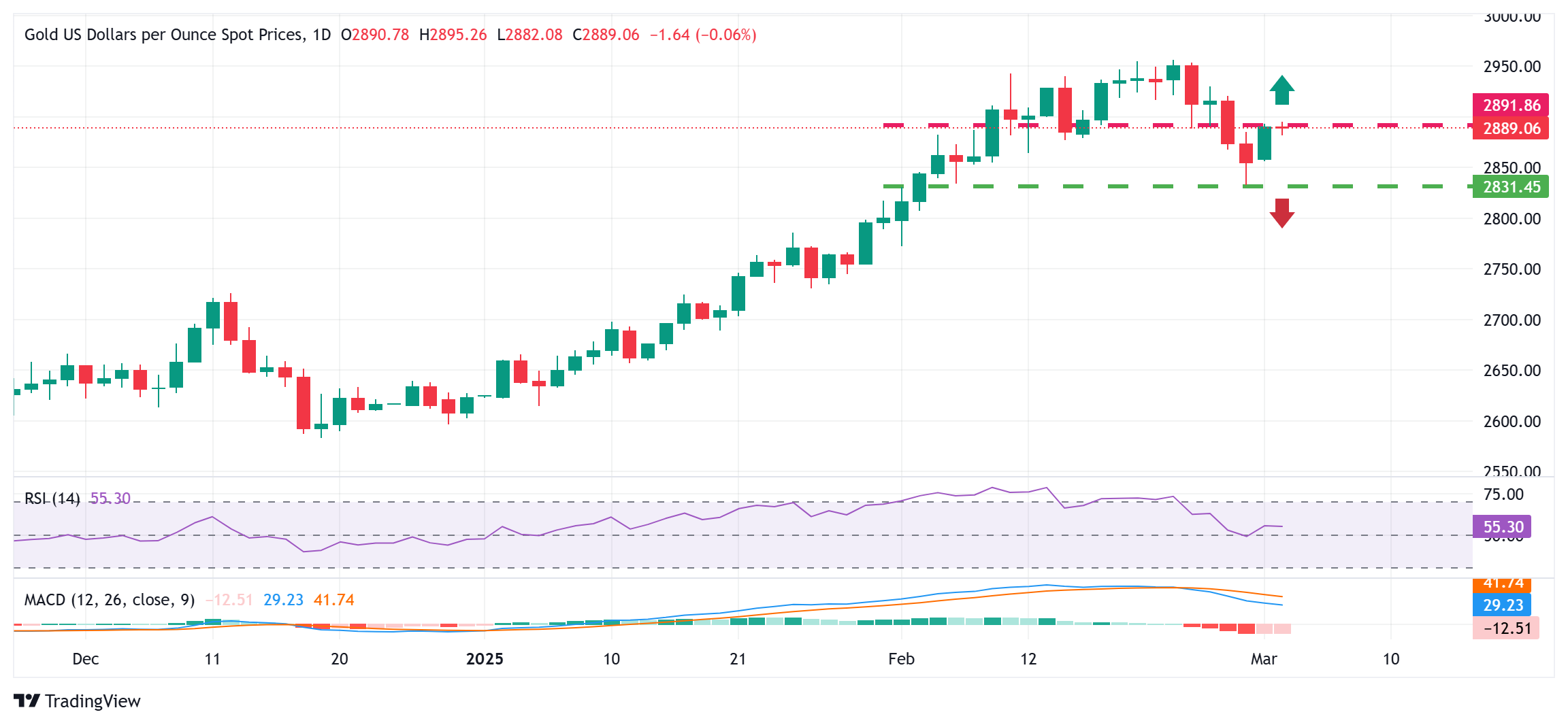Meanwhile, concerns about the potential economic impact of a global trade war sparked by Trump’s protectionist policies have dampened investor demand for risky assets. This was evident against the backdrop of broad equity weakness, which could provide some support to safe-haven gold prices. Moreover, geopolitical risks could help limit further losses for gold. Traders may also choose to avoid aggressive bets ahead of the U.S. non-farm payrolls (NFP) report due on Friday.
Investors remain concerned that U.S. President Donald Trump’s trade tariffs will add to price pressures and keep the Federal Reserve on a hawkish stance, prompting some selling in gold prices on Tuesday.
Trump’s tariffs on Mexico and Canada will take effect on Tuesday, along with a new 10% tax on Chinese goods. Trump also said reciprocal tariffs on countries that have imposed tariffs on U.S. products will take effect on April 2.
The Canadian Prime Minister's Office confirmed that Canada will impose retaliatory tariffs on US imports. China's Ministry of Commerce vowed to take necessary countermeasures to safeguard legitimate rights and interests.
This increases the risk of a global trade war and weighs on investor sentiment, which should provide support for safe-haven precious metals and help limit deeper losses against the backdrop of a weaker dollar.
The Institute for Supply Management (ISM) manufacturing purchasing managers' index fell to 50.3 in February from 50.9 the previous month, while the prices paid index jumped to its highest level in nearly three years amid concerns about import tariffs.
This, coupled with concerns that Trump's trade tariffs could weaken consumer spending and heighten concerns about the outlook for the world's largest economy, could provide further support for the gold/dollar pair.
Ukrainian President Vladimir Zelensky's meeting with Trump ended in disaster on Friday. Additionally, a White House official confirmed that the US has suspended military aid to Ukraine, adding to the uncertainty in the market.
Market focus will continue to be on the US monthly employment data, the Non-Farm Payrolls (NFP) report, which will be released on Friday. This key data will affect the US dollar and gold prices.

From a technical perspective, the failure to break through the $2,900 mark warrants caution for bullish traders. Although the oscillators on the daily chart have lost momentum, they remain in the positive zone and support the prospect of some dip buying around $2,860. Next up is the multi-week low hit last Friday, around the $2833-2832 area, a break below which could accelerate the price of gold down towards the $2800 round mark.
On the other hand, bulls may wait for continued strength and confirmation above $2900 before making new bets. The subsequent rise could push gold prices to the intermediate resistance of $2934 and then closer to the record high of $2956 area hit last Monday.
Gold has played a key role in human history as it is widely used as a store of value and medium of exchange. Currently, in addition to its lustre and use in jewellery, gold is widely considered a safe haven asset, meaning it is considered a good investment in turbulent times. Gold is also widely seen as a hedge against inflation and currency debasement as it is not dependent on any particular issuer or government.
Central banks are the largest holders of gold. To support their currencies during turbulent times, central banks tend to diversify their reserves and buy gold to boost perceptions of economic and monetary strength. High gold reserves can be a source of confidence in a country's solvency. According to the World Gold Council, central banks added 1,136 tons of gold reserves in 2022, worth about $70 billion. This is the highest annual purchase on record. Central banks in emerging economies such as China, India and Turkey are rapidly increasing their gold reserves.
Gold is negatively correlated with the U.S. dollar and U.S. Treasuries, both of which are major reserve assets and safe havens. Gold tends to rise when the dollar depreciates, allowing investors and central banks to diversify their assets during turbulent times. Gold is also negatively correlated with risky assets. Stock market rebounds tend to push gold prices lower, while sell-offs in riskier markets tend to benefit gold.
Prices can move due to a wide variety of factors. Geopolitical instability or fears of a deep recession could quickly push gold prices higher due to its safe-haven status. As a low-yielding asset, gold tends to rise as interest rates fall, while higher funding costs usually weigh on gold. Still, since the asset is priced in U.S. dollars (XAU/USD), most movements depend on the performance of the U.S. dollar (USD). A strong dollar tends to control gold prices, while a weak dollar can push them higher.